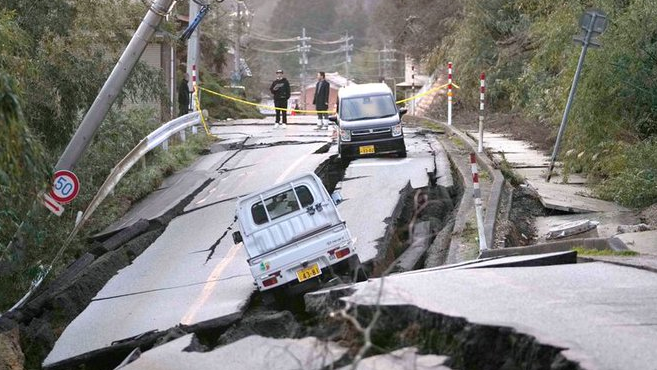Japan’s Prime Minister Fumio Kishida has abruptly cancelled his planned visit to Central Asia this weekend after experts raised alarms about the heightened risk of a “megaquake” following a recent magnitude 7.1 earthquake in the country’s southwest. The decision underscores the seriousness of the situation as Japan braces for potential seismic activity along its vulnerable Pacific coast.
Kishida, whose leadership is under scrutiny with low approval ratings and an upcoming ruling party presidential election, made the announcement during a press conference on Friday. His trip was set to include a summit with leaders from Kazakhstan, Kyrgyzstan, Tajikistan, Turkmenistan, and Uzbekistan in the Kazakh capital, Astana, followed by a meeting with Mongolia’s president in Ulaanbaatar, according to Kyodo News.
Also Read: U.S. F-18 Fighter Jets Arrive in Jordan Amid Tensions with Iran
The Japan Meteorological Agency issued its first-ever warning of a possible major earthquake along the Nankai Trough, a subduction zone known for generating devastating quakes and tsunamis. The agency emphasized that while the risk is higher than usual, this does not guarantee an imminent disaster. The warning followed a quake on the island of Kyushu that triggered a tsunami alert, although no casualties or significant damage were reported.
Experts have noted that the Nankai Trough, a 500-mile undersea fault line stretching from Shizuoka to Kyushu, has historically produced massive earthquakes with magnitudes of 8 or 9 approximately every 100 to 200 years. These quakes, often occurring in pairs, have caused catastrophic tsunamis in Japan, a country highly prone to seismic activity. The last major rupture along the entire trough occurred in 1707, marking the second-most powerful earthquake in Japanese history.
While predicting the exact timing of such events remains elusive, government seismologists estimate a 70% to 80% chance of a megaquake in the region within the next 30 years. A worst-case scenario could result in the loss of 300,000 lives and economic damage estimated at up to $13 trillion.
Despite the elevated risk, experts caution against public panic. “The history of great earthquakes at Nankai is convincingly scary,” wrote geologists Kyle Bradley and Judith A. Hubbard in their Earthquake Insights newsletter. However, they stressed that the probability of a major follow-up quake remains low, even under current conditions.
Key Points:
- Japan’s Prime Minister Fumio Kishida has canceled his visit to Central Asia due to heightened warnings of a potential “megaquake” along the country’s Pacific coast.
- The cancellation follows a magnitude 7.1 earthquake in southwestern Japan, prompting concerns about increased seismic activity.
- The Japan Meteorological Agency issued its first-ever warning of a major earthquake risk along the Nankai Trough, a historically active subduction zone.
- While experts emphasize the elevated risk, they clarify that this does not guarantee an immediate earthquake.
- The Nankai Trough, known for producing devastating earthquakes and tsunamis every 100 to 200 years, poses significant seismic threats to Japan.
- Government estimates suggest a 70% to 80% chance of a megaquake hitting the region in the next 30 years, with potential catastrophic consequences.
- Despite the warnings, experts advise against panic, emphasizing the inherent uncertainty in predicting earthquake timing and magnitude.



